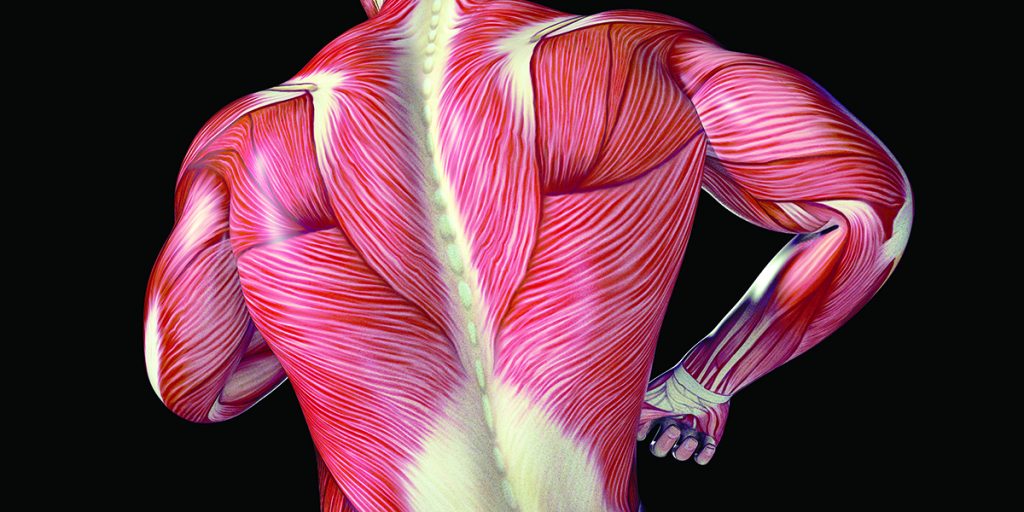Fascia is the collagenous soft connective tissue that binds all of your body’s other structures. Defined as the largest organ system of the body in 2012 by the Federative Committee on Anatomic Terminology, it is now the most studied tissue in human movement science. Here is what current research is learning about this amazing tissue that, like the mesh on a garden hose, needs to withstand pressure from the inside (by exerting pressure itself) and also stay flexible.
- holds four gallons of water in the average person
- can exert up to 2000 pounds of tensile pressure per square inch on pain-sensitive structures — the equivalent of being 4613 feet under water
- is the root cause of neuropathy (numbness of an unknown nature)
- does not appear on X-rays, MRIs or CT scans. This might explain why you have numbness and tingling and the physicians don’t know why.
- is made of collagen and water. If you do not drink at least half your bodyweight in ounces per day, your fascia may be suffering!
- can prevent effective drainage of cellular waste products known to cause inflammation and ultimately cancer
- can cause mechanical deformations in your bones and muscles that lead to poor mechanics resulting in musculoskeletal injuries
Many medical conditions appear to be related to the health or otherwise of your fascia. For example, when you have tight fascia around your muscles, it applies excess tension to the structures within your muscles — arteries, veins, nerves, lymphatic vessels and things we call free nerve endings. It is this fascial tension, studies suggest, that may be the root cause of dozens and dozens of idiopathic (of unknown or uncertain cause) pathologies: vertigo, idiopathic cough, tinnitus, tennis elbow, golfers elbow, irritable bowel syndrome, frequent urination, patellofemoral tracking issues, hammer toes, peripheral neuropathy, and loss of grip strength.
Achilles tendon rupture, plantar fasciitis, bone spur formations, trigger finger, carpal tunnel, golfer’s elbow, tennis elbow, frozen shoulder, sciatica, bulging discs, and degenerative disc disease may be the result of the fascia’s creation of mechanical deformations in your bones and muscles.
The good news is that your fascia will respond to the stimulus you apply to it, whether you are 50 years old or 90! Fascia-based techniques for relieving pain, reducing inflammation, and regaining mobility and ease of motion have proven to be effective for many people, including seniors.
THE FASCIANATOR



Leave a Reply